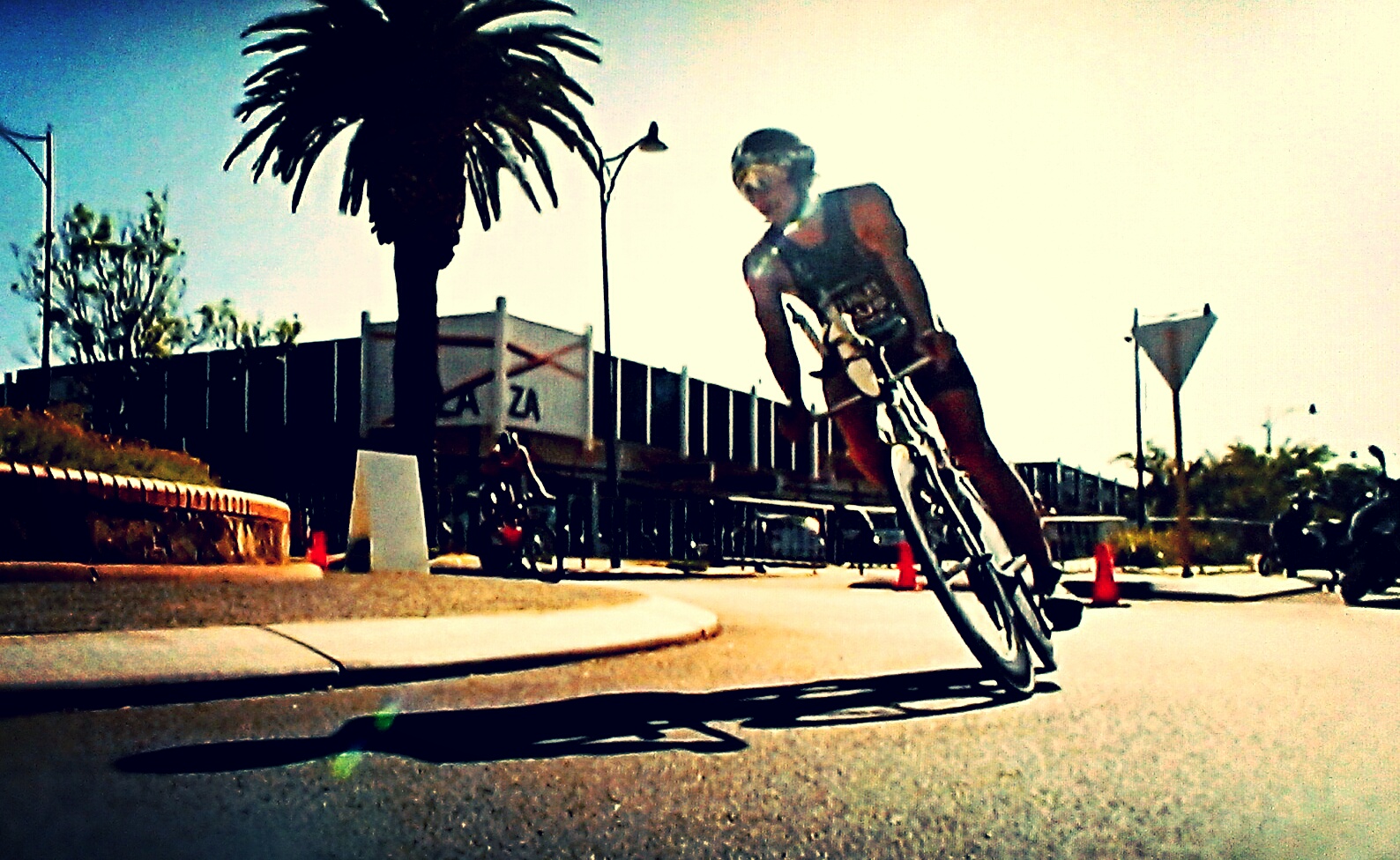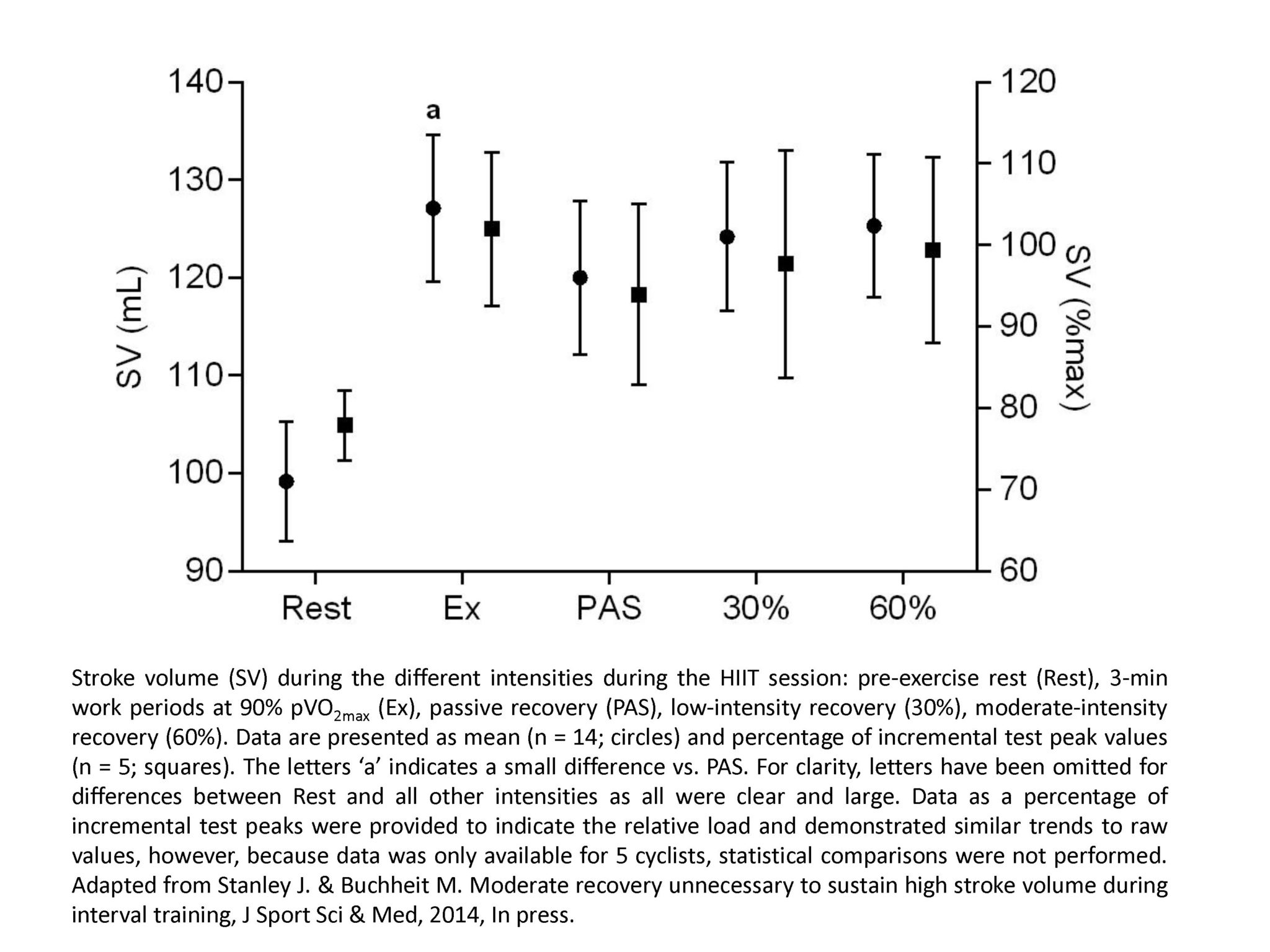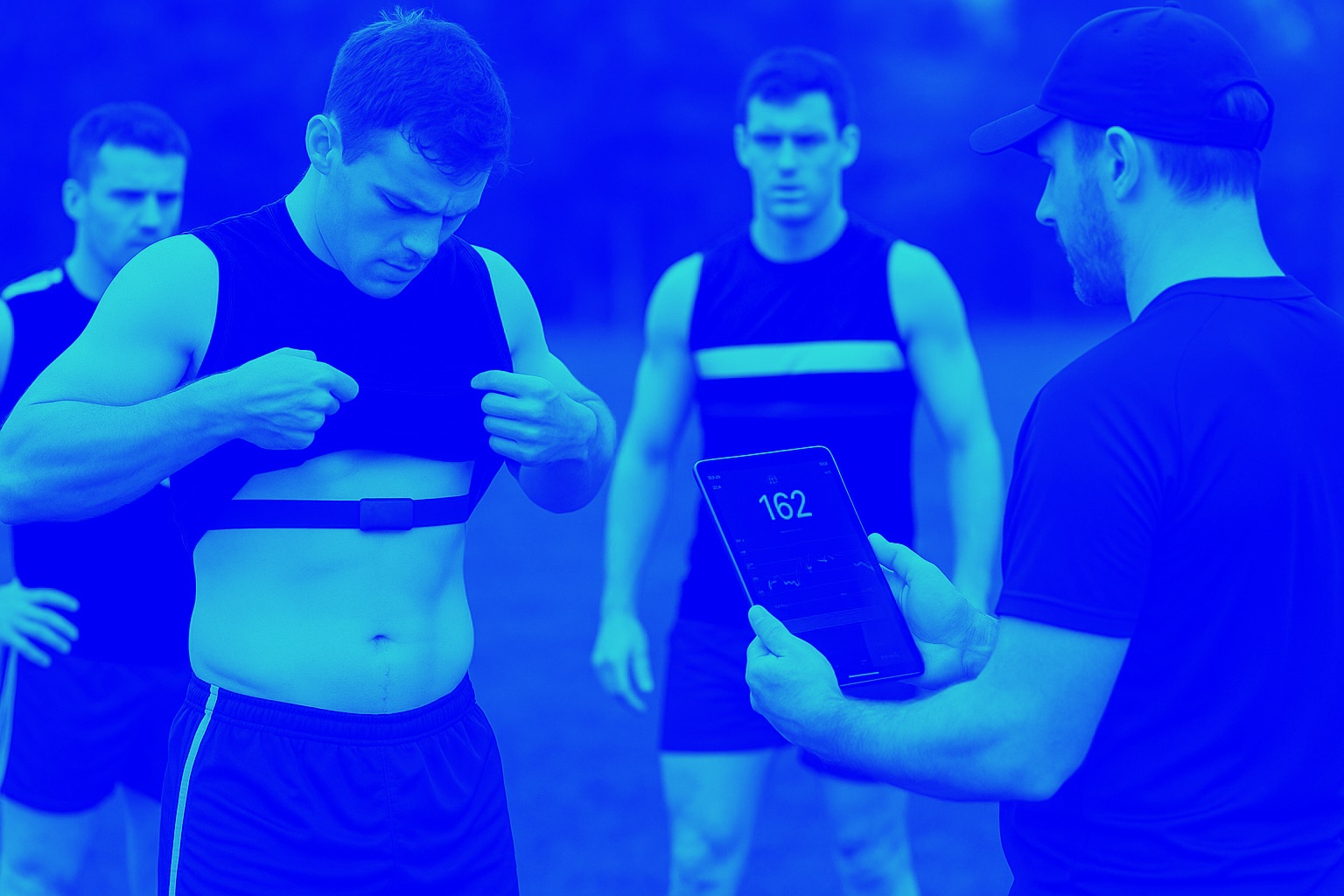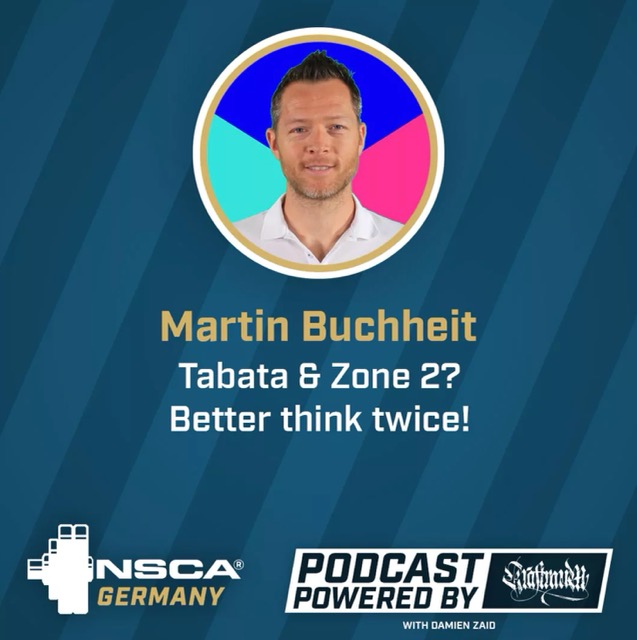Moderate recovery unnecessary to sustain high stroke volume during interval training
 Stanley J. & Buchheit M. Moderate recovery unnecessary to sustain high stroke volume during interval training, J Sport Sci & Med, 2014, In press.
Stanley J. & Buchheit M. Moderate recovery unnecessary to sustain high stroke volume during interval training, J Sport Sci & Med, 2014, In press.
It has been suggested that the time spent at a high stroke volume (SV) is important for improving maximal cardiac function. The aim of this study was to examine the effect of recovery intensity on cardiovascular parameters during a typical high-intensity interval training (HIIT) session in fourteen well-trained cyclists. Oxygen consumption (VO2), heart rate (HR), SV, cardiac output (Qc), and oxygenation of vastus lateralis (TSI) were measured during a HIIT (3×3 min work period, 2 min recovery) session on two occasions. VO2, HR and Qc were higher during moderate-intensity (60%) compared with low-intensity (30%) (VO2, effect size; ES=+2.6; HR, ES=+2.8; Qc, ES=+2.2) and passive (HR, ES=+2.2; Qc, ES=+1.7) recovery. By contrast, there were no clear differences in SV between the three recovery conditions, with the SV during the two active recovery periods not being substantially different than during exercise (60%, ES=−0.1; 30%, ES=−0.2). To conclude, moderate-intensity recovery may not be required to maintain a high SV during HIIT.
Keywords: high-intensity interval training; cardiac output; cardiac function; arteriovenous oxygen difference
 Follow Jamie on twitter
Follow Jamie on twitter



